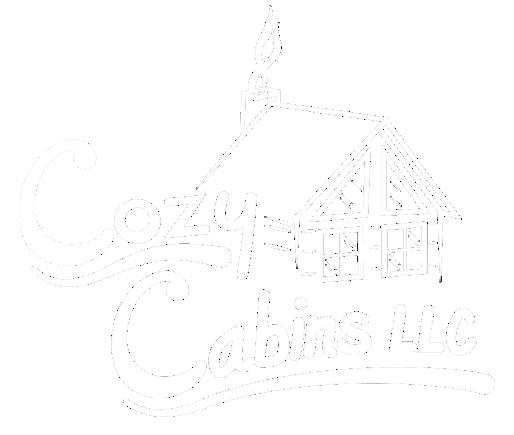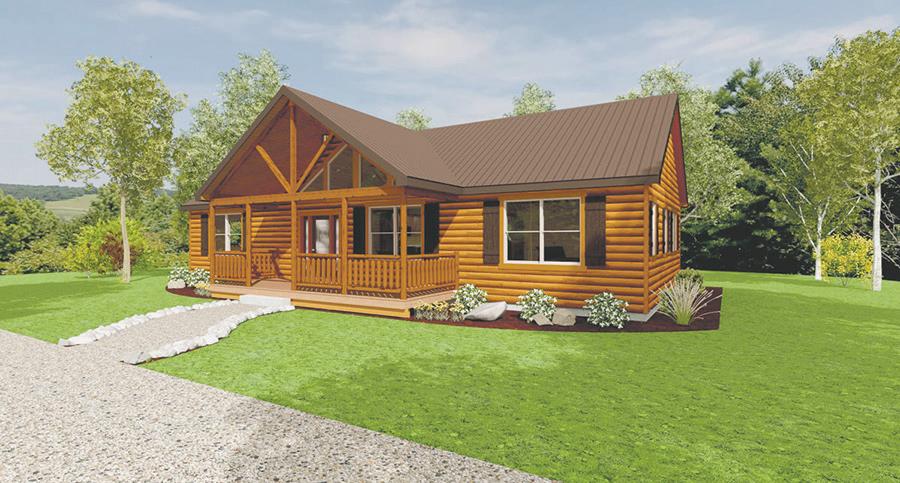Adirondack Adventure Guide

Summer 2023
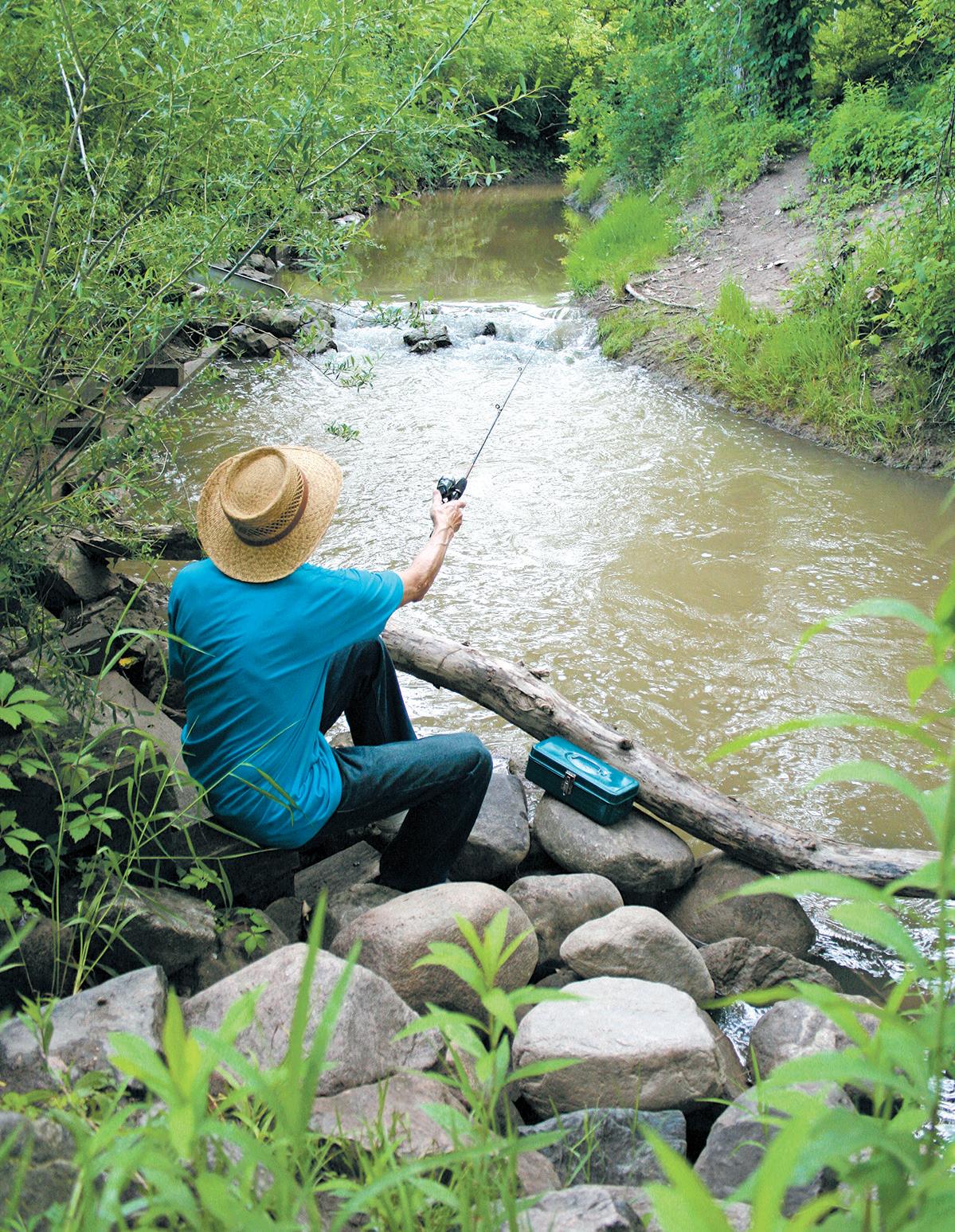













































New York State Department of Environmental Conservation Commissioner Basil Seggos reminded New Yorkers on May 17 to appreciate wildlife from a safe distance and resist the urge to touch or pick up newborn fawns and other young wildlife. Human contact with wildlife can result in unintended consequences detrimental to the animals people intend to help.
“This is the time of year New Yorkers are more likely to see young or newborn animals in their yards and mistakenly think these animals need help,” Commissioner Seggos said. “The recently fledged birds or baby rabbits in your yard likely have parents hiding nearby keeping an eye on their offspring. Please resist the urge to touch these wild animals and instead enjoy the encounter from a safe distance. Remember - if you care, leave it there.”
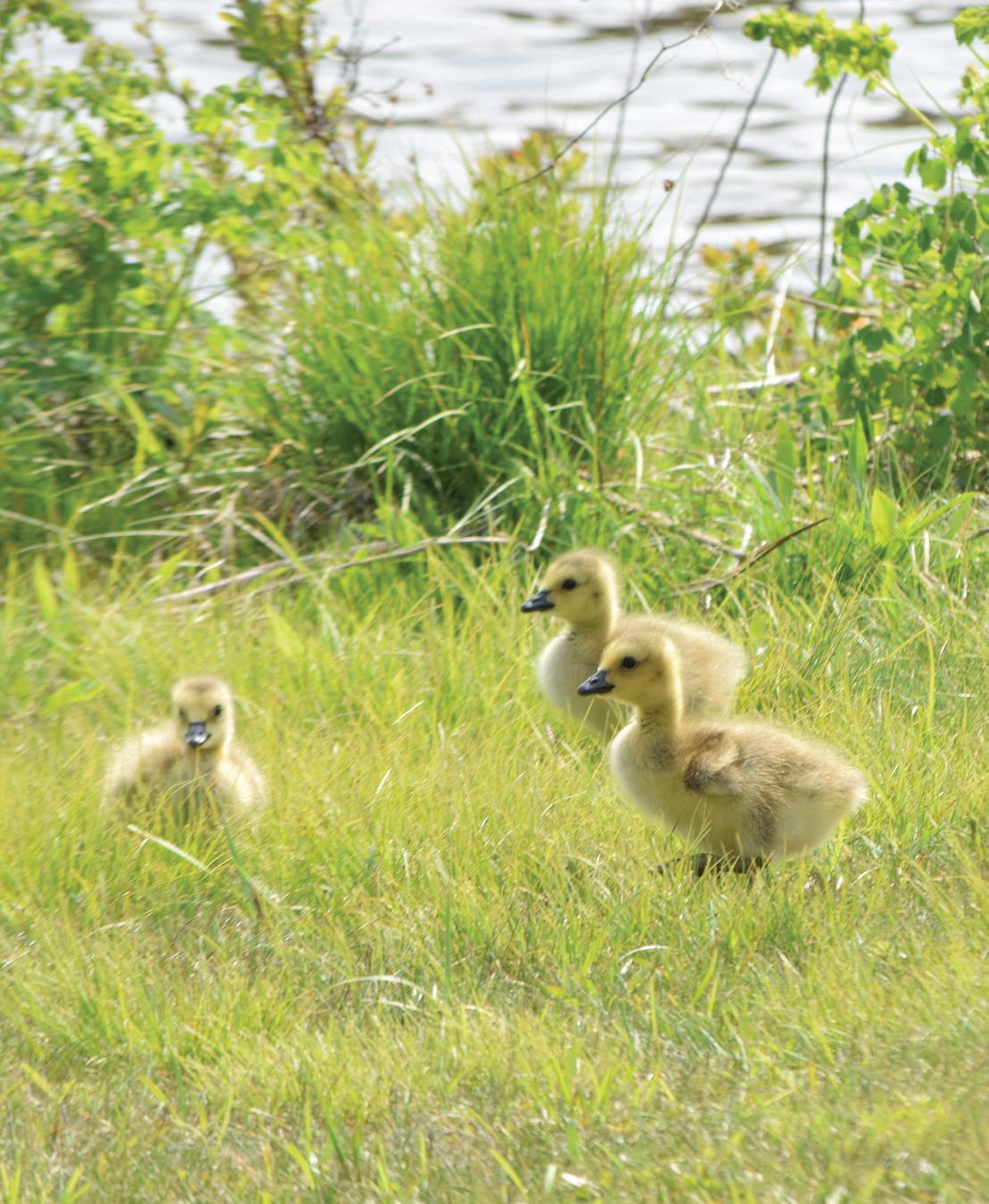
During spring months, animal sightings and encounters are common. Young wildlife quickly venture into the world on wobbly legs or are unable to fly on their own. While most young wildlife learn survival skills from one or both parents, some receive little or no care. Often, wild animals stay away from their young, especially when people or pets are present. For these young animals, the perils of survival are a natural part of life in the wild. Unfortunately, well-intentioned individuals may
attempt to care for young wild animals they believe to be abandoned or in need of assistance. These human interactions typically do more harm than good.
For example, white-tailed deer fawns are born during late May and early June. Although fawns can walk shortly after birth, they spend most of their first several days lying still in tall grass, leaf litter, or sometimes relatively unconcealed. During this period, a fawn is usually left alone by the adult female (doe), except
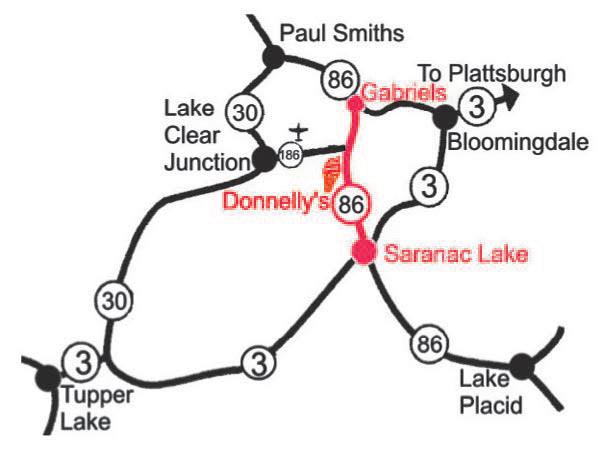
when nursing. People occasionally find a lone fawn and mistakenly assume it has been abandoned, which is rare. Fawns should be left alone. Take a picture, but don’t take the fawn or attempt to feed it. If human presence is detected by the doe, the doe may delay its next visit to nurse. A fawn’s best chance to survive is to be raised by the adult doe. Fawns nurse three to four times a day, usually for less than 30 minutes at a time, but otherwise the doe keeps her distance, which
helps reduce the chance a predator will follow her to the fawn.
A fawn’s protective coloration and ability to remain motionless help it avoid detection by predators and people. By the end of its second week of a fawn’s life, it begins to move about and spend more time with the doe. It also begins to eat grass and leaves. At about 10 weeks of age, fawns are no longer dependent on milk, although they continue to nurse occasionally into the fall.
DEC also reminds the public that young wildlife are not pets. Keeping wildlife in captivity is illegal and harmful to the animal. Wild animals are not well-suited for life in captivity and may carry diseases that can be transferred to humans. Anyone who observes wildlife that appear to be sick or behaving abnormally should contact their DEC regional wildlife office.

Anyone that encounters a young wild animal that is obviously injured or orphaned should call a wildlife rehabilitator. Wildlife rehabilitators are trained volunteers licensed by DEC. They are the only people legally allowed to receive and treat distressed wildlife. They have the experience, expertise, and facilities to successfully treat and release wild animals.
DEC advises to keep pets indoors when young animals are present. Many fledgling birds cannot fly when they first leave the nest and are easy prey for a house cat.
For more information and answers to frequently asked questions about young wildlife, visit DEC’s website.
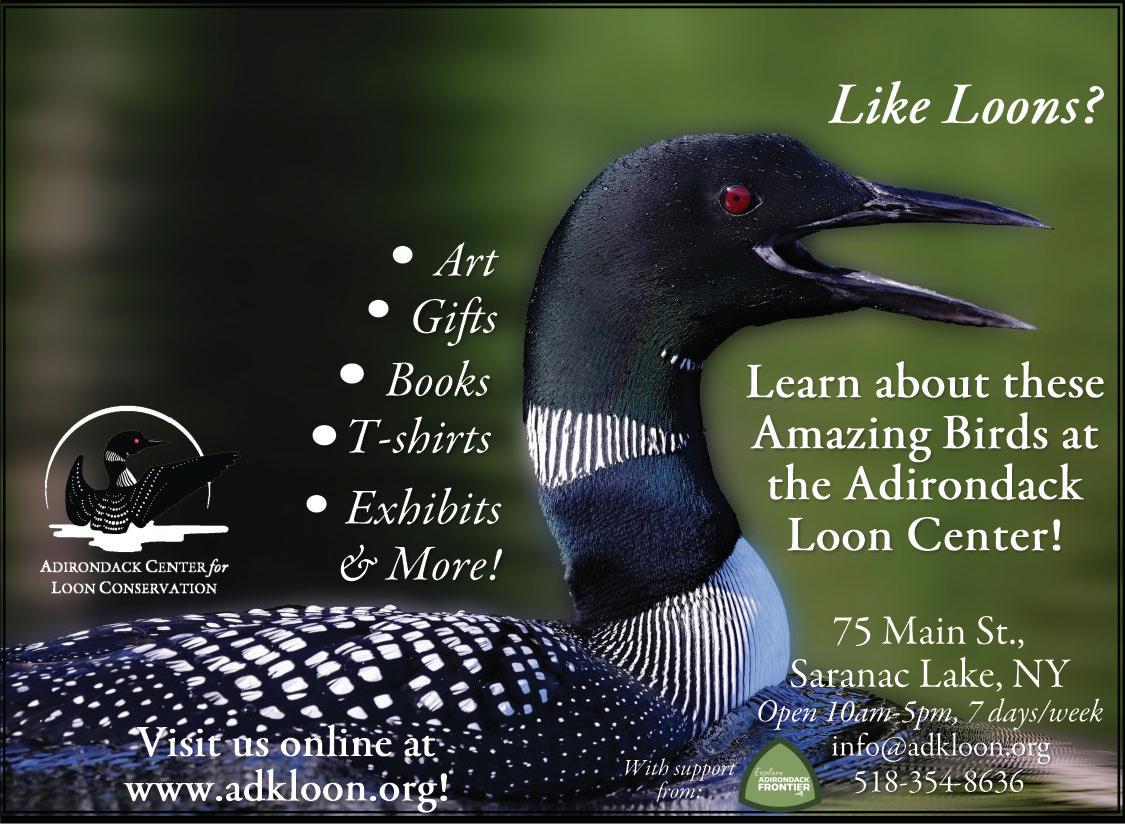
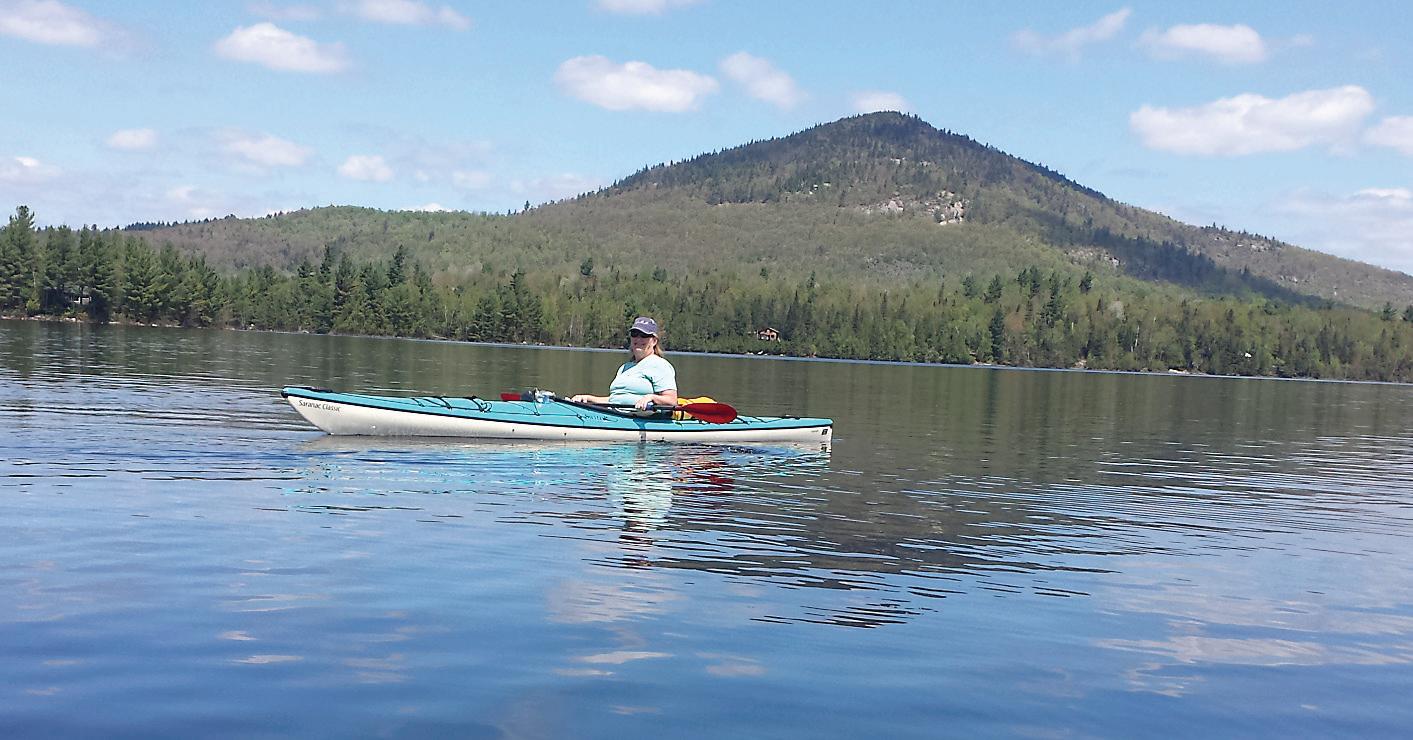
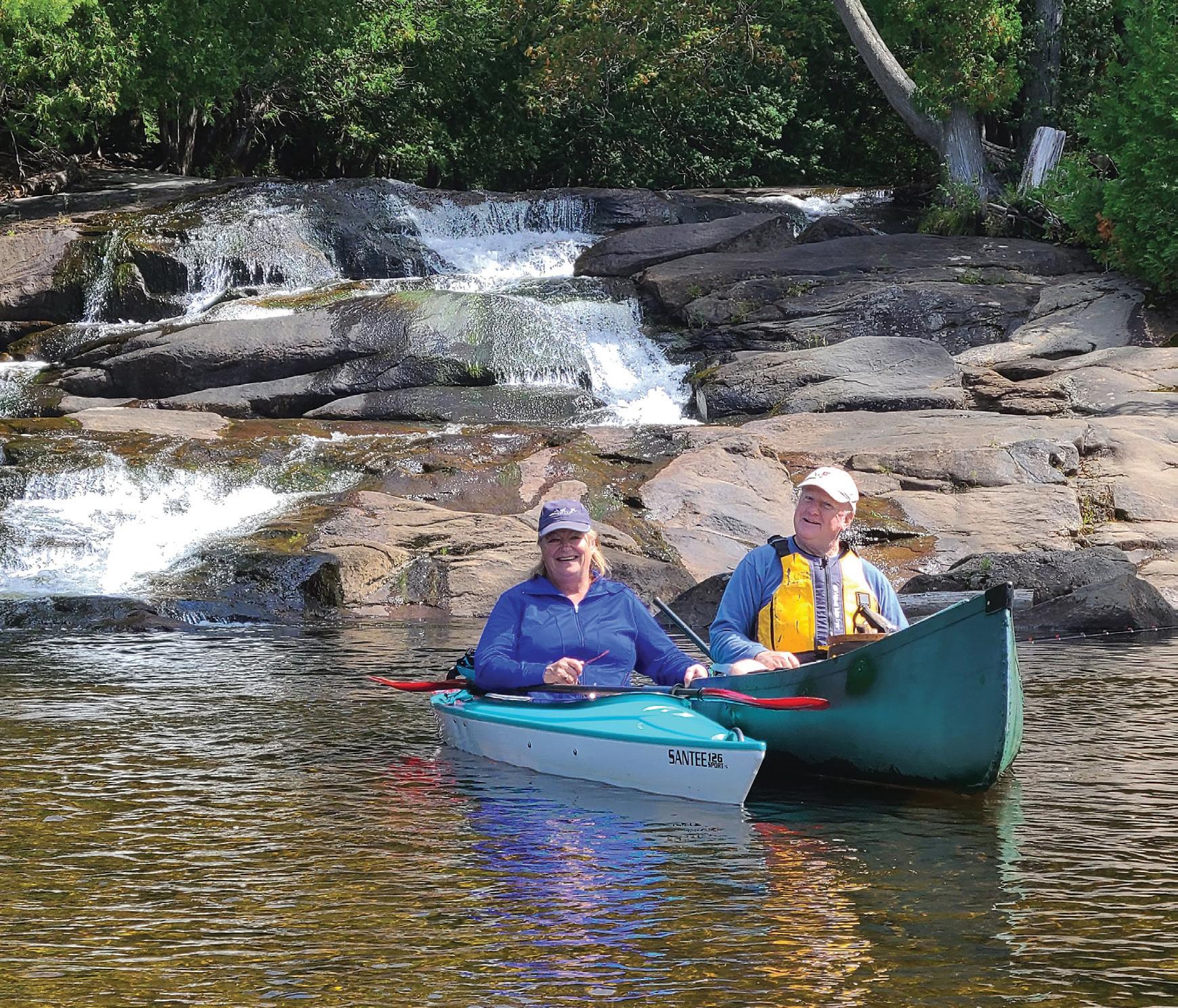 By KENZIE MARINE Saranac Lake Regional Manager at ROOST and RACHEL KARP Executive Director of the Saranac Lake Chamber of Commerce
By KENZIE MARINE Saranac Lake Regional Manager at ROOST and RACHEL KARP Executive Director of the Saranac Lake Chamber of Commerce
Liz Murray, an avid kayaker with a passion for exploration, was inspired by the Tupper Lake Triad Paddling Challenge and its sense of achievement. Determined to bring a similar experience to Saranac Lake, she reached out to Jason Smith and Rich Harris of Adirondack Lakes and Trails. Together, they embarked on a journey to create something extraordinary - the Saranac Lake Paddling Challenge.
To shape this unique endeavor, Jason presented the idea at the Celebrate Paddling committee meeting, which brought together prominent figures in the local paddling community. Attendees included Brian McDonnell from MAC’s Canoe Livery, Maeghan Farhnam from St. Regis Canoe Outfitters, Chris Morris representing the Northern Forest Canoe Trail, Anne Fleck from Raquette River Outfitters, Kenzie Marine from ROOST, and Rachel Karp from the Saranac Lake Area Chamber of Commerce.
Out of this collaboration, the Saranac Lake Paddling Challenge was born, coinciding perfectly with Celebrate Paddling month. As a decidedly different community, Saranac Lake embraces its
uniqueness, and it is only fitting that the paddling challenge follows suit.
So, what sets the Saranac Lake Paddling Challenge apart?
Five Thrilling Paddles: While most paddling challenges in the Adirondacks feature three paddles to complete, our challenge presents five. The team had the tough
ing paddles from the abundance of opportunities available in Saranac Lake.
A Patch Like No Other: Our patch is a testament to our distinct identity. Breaking away from the traditional round design, it showcases vibrant colors inspired by the iconic Saranac Lake branding and features a striking diamond
community.
Unparalleled Paddling Support: Saranac Lake is blessed with three exceptional paddling outfitters, an unmatched level of support for paddlers. This extensive network ensures you’ll have everything you need for an unforgettable experience on the water.
Now, let’s explore the paddles and how you can earn your patch:
Paddle 1: South Creek to Second Pond.
Paddle 2: Second Pond to Lake Flower.
Paddle 3: Saranac River-Pine Street to McCasland Bridge.
Paddle 4: St. Regis Chain of Lakes.
Paddle 5: Follensby Clear Pond Loop.
ULTRA Challenge: Complete paddles 1-3 in a single day!
Kickoff to the Saranac Lake
Continued on page 5
Continued from page 4
Paddling Challenge will be June 1, 2023. Registration and completion of the five paddling routes must begin on or after that date. To receive your well-deserved patch, sign up for the challenge on our website at: https://www.saranaclake.com/saranac-lake-paddling-challenge, and upon completing all of the five paddling
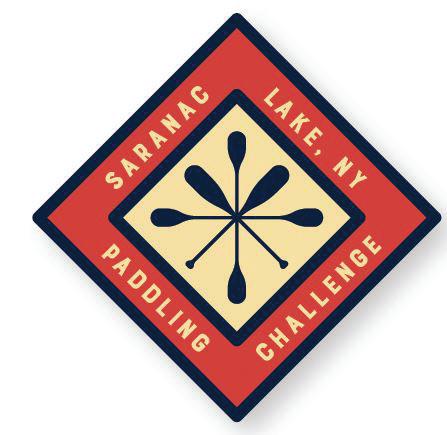
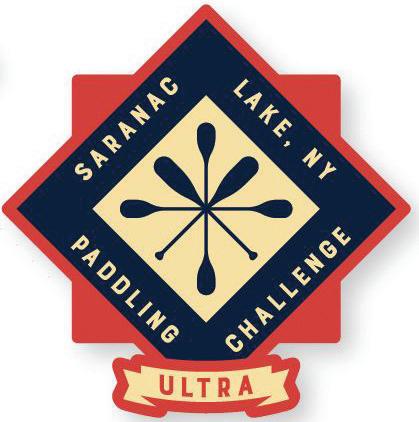
routes, the Saranac Lake Area Chamber of Commerce will be thrilled to provide you with your official patch. Prepare to embark on an extraordinary paddling adventure, immersing yourself in the beauty of Saranac Lake’s waters and unlocking the thrill of exploration. Visit our website for more information and join us for the Saranac Lake Paddling Challenge!

The Saranac Lake Paddling Challenge has truly been a collaborative effort. We extend our gratitude to the Saranac Lake Village, NY State Department of Conservation (DEC), and all other parties involved in the successful launch of the Saranac Lake Paddling Challenge. Your support and invaluable guidance have been instrumental in bringing this
exciting initiative to fruition. With your partnership, we have created a unique opportunity for paddling enthusiasts to explore the beauty of Saranac Lake’s waters and forge unforgettable memories. We are truly grateful for your commitment to promoting outdoor recreation and fostering a deep appreciation for our natural surroundings.
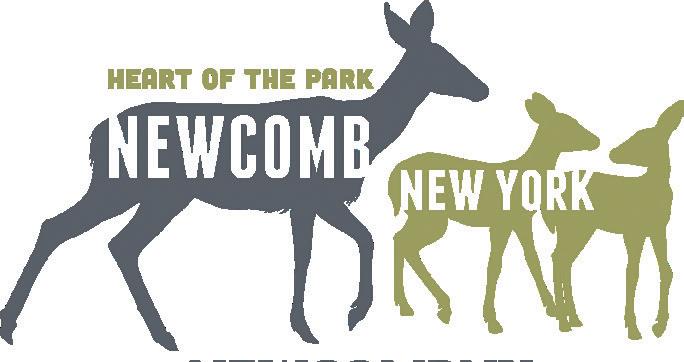

In recognition of World Turtle Day on Tuesday, May 23, 2023, New York State Department of Environmental Conservation Commissioner Basil Seggos reminded New Yorkers that turtles are nesting in May and June, and asked motorists to “give turtles a brake.” In New York, thousands of turtles are killed each year by unsuspecting drivers when turtles cross roads to find nesting areas.
“While a turtle’s shell provides protection from predators, it does not protect against being struck by vehicles while crossing roadways,” Commissioner Seggos said. “Vehicle strikes are a major cause of mortality among turtles and New York’s native turtles are more susceptible at this time of year as they seek sandy areas or loose soil in which to lay their eggs. DEC urges drivers to be on the lookout for turtles and slow down, particularly on roads near rivers and marshy areas.”
Drivers who see a turtle on the road are encouraged to slow down to avoid hitting it with their vehicle. If the vehicle can safely stop and drivers are able to safely do so, motorists should consider moving the turtle to the shoulder on the side of the road in the direction it was facing. Motorists are advised not to pick turtles up by their tails, which could injure the turtle. Most turtles, other than snapping turtles, can be picked up safely by the sides of their shells. Snapping turtles have necks that can reach far back and have a strong bite, so if motorists try to help a snapping turtle, they should pick it up by the rear of the shell near the tail using both hands, or slide a car mat under the turtle to drag it safely across the road. Do not drag the turtle by the tail as doing so can dislocate the tail bones.
A licensed wildlife rehabilitator may be able to help if an injured turtle is found.
DEC reminds people not to take turtles home. All native turtles are protected by law and cannot be kept without a DEC permit. Most of the 11 species of land turtles that are native to New York are in decline. Turtles are long-lived species and it takes many years for a turtle to reach maturity. Even losing one mature female can have a negative impact on a local population. Learn more about New York’s native turtles at DEC’s website.
Four species of sea turtles can be found in New York waters, and these turtles are all either threat-
ened or endangered. Visit DEC’s website to learn more about sea turtles. Anyone that encounters a sea turtle on the beach should not put it back in the water, instead the public is advised to call the state 24-Hour Stranding Hotline at 631369-9829 and a trained responder will provide instructions.
To help turtles and other wildlife, New Yorkers are encouraged to:

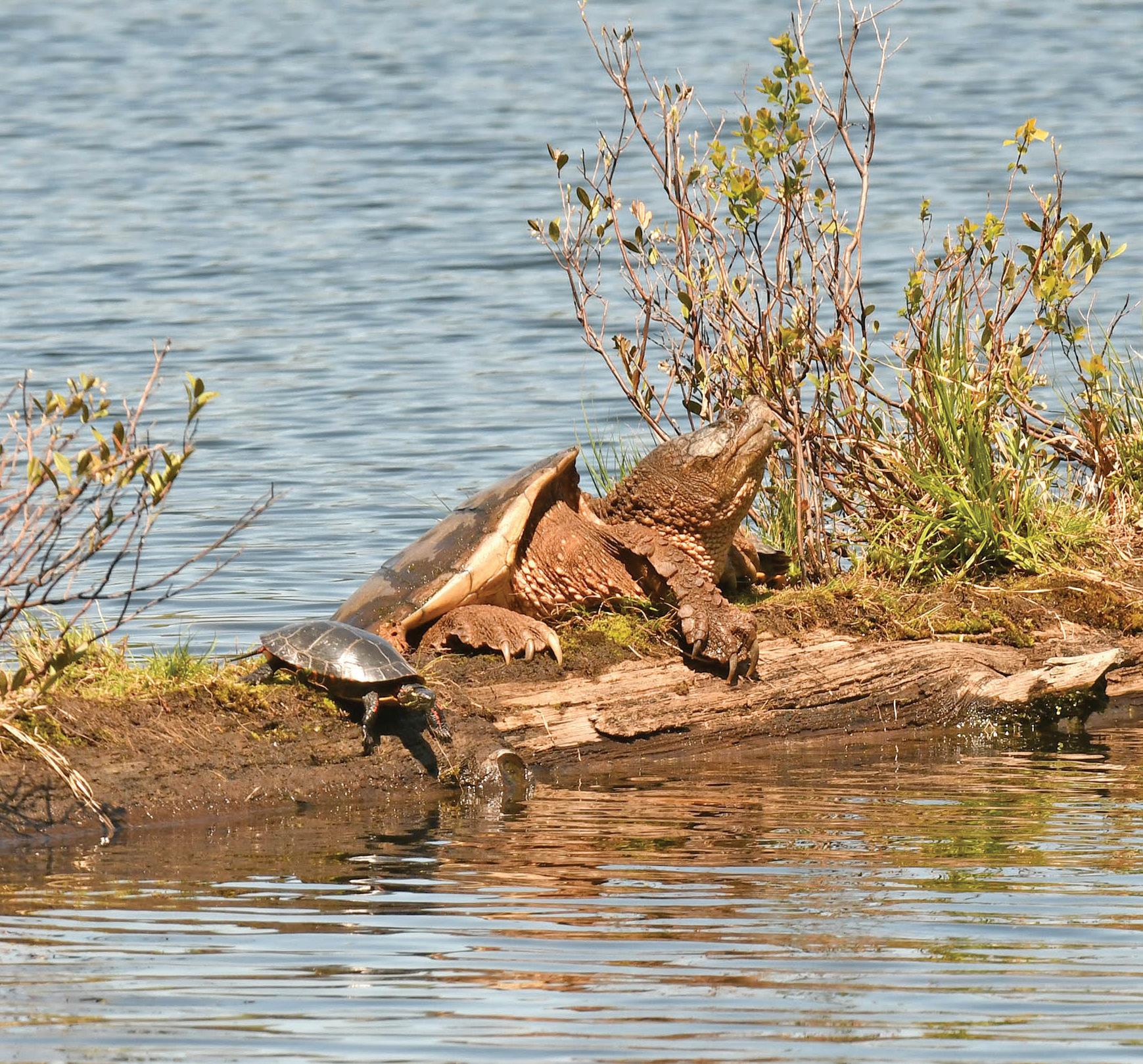
Reduce, Reuse, Recycle, and Rethink: these are simple steps to help protect all wildlife;
Don’t litter: unwanted trash makes its way just about everywhere, including into our creeks, lakes, rivers, and the ocean;
Don’t release balloons or lanterns: releasing balloons into the environment is potentially fatal for many different wildlife, including sea turtles that commonly mistake balloons and plastic bags for prey items like jellyfish;
Volunteer for beach and park clean-ups; and
Stay informed and share your knowledge with others.
Spending time outdoors is good for the mind and the body. Researchers have studied the effects that spending time outdoors, particularly in wooded areas, has on well-being. A 2021 meta-analysis published in the International Journal of Environmental Research and Public Health concluded that forest-based interventions have a beneficial, therapeutic effect on stress, mental health disorders, hypertension, and immune system function.
In their excitement to engage in outdoor activities, nature lovers should not forget to heed safety precautions. That means recognizing the potential for safety hazards outdoors and how to react in potentially difficult situations.
Weather patterns can change rapidly. Always check multiple weather sources for your destination prior to heading out. Layer clothing accordingly for the weather in your destination, and have a plan in place in case a storm blows in. If stuck outdoors in a thunderstorm with lightning, find a low spot with a ditch or a depression, suggests AccuWeather. Keep in mind that tents and pavilions provide inadequate shelter and are nearly as risky as standing under a tall tree, advises the National Oceanic and Atmospheric Administration.
No one wants to get hurt while enjoying the great outdoors, but injuries happen. Always carry safety gear. Pack a first aid kit with the basics, but also items geared toward your adventure. For example, a life
jacket is essential when boating or spending time on the water. When hiking, you may need to stabilize a twisted ankle or a broken limb from a fall, so carry a splint on challenging hikes. Bringing a buddy along also is a safety measure. That way he or she can seek out help if you are injured, and vice versa.

The lay of the land can be hazardous. Outdoor enthusiasts should be aware of their surroundings, which can include sheer cliff edges, steep climbs, loose rocks, deep waters, and more. CoolHikingGear.com warns that any river above ankle height has the potential to sweep a person off his or her feet if the current is moving. Avoid crossing rivers and know the terrain ahead of time to plan safely.
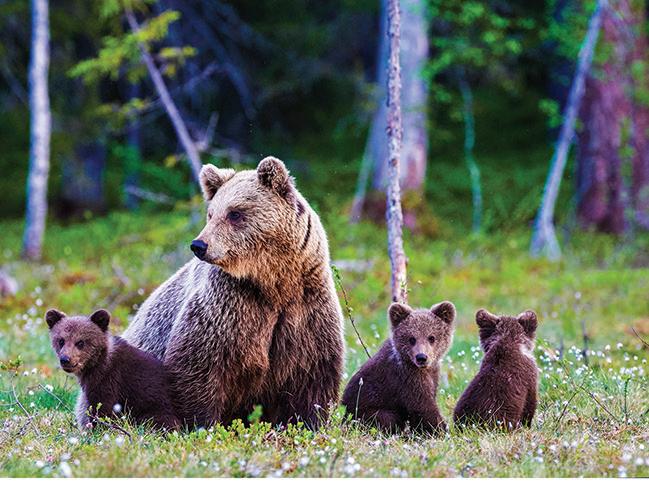
People are not the only animals who enjoy the great outdoors. Encountering wildlife is common when venturing into their habitats. Some animals even travel into residential neighborhoods in search of food. Many animals prefer to run off rather than engage with humans. But they also can be surprised by people or pets in nature. Traveling in groups; making noise so as not to surprise animals; keeping pets close by; and avoiding hiking at dawn and dusk when many animals are most active can reduce the risk for potentially dangerous encounters. Be aware of wildlife birthing seasons, as a mother may be overly protective if you stumble across her young.
When the great outdoors beckons, individuals answering the call must remember to do so safely.
In all likelihood, no one has ever complained about a lack of flatwater paddling opportunities in the Adirondacks. The Park is home to hundreds of lakes, ponds and rivers that offer essentially limitless canoe, kayak, and SUP opportunities while also providing clean water for millions of people throughout the Northeast.
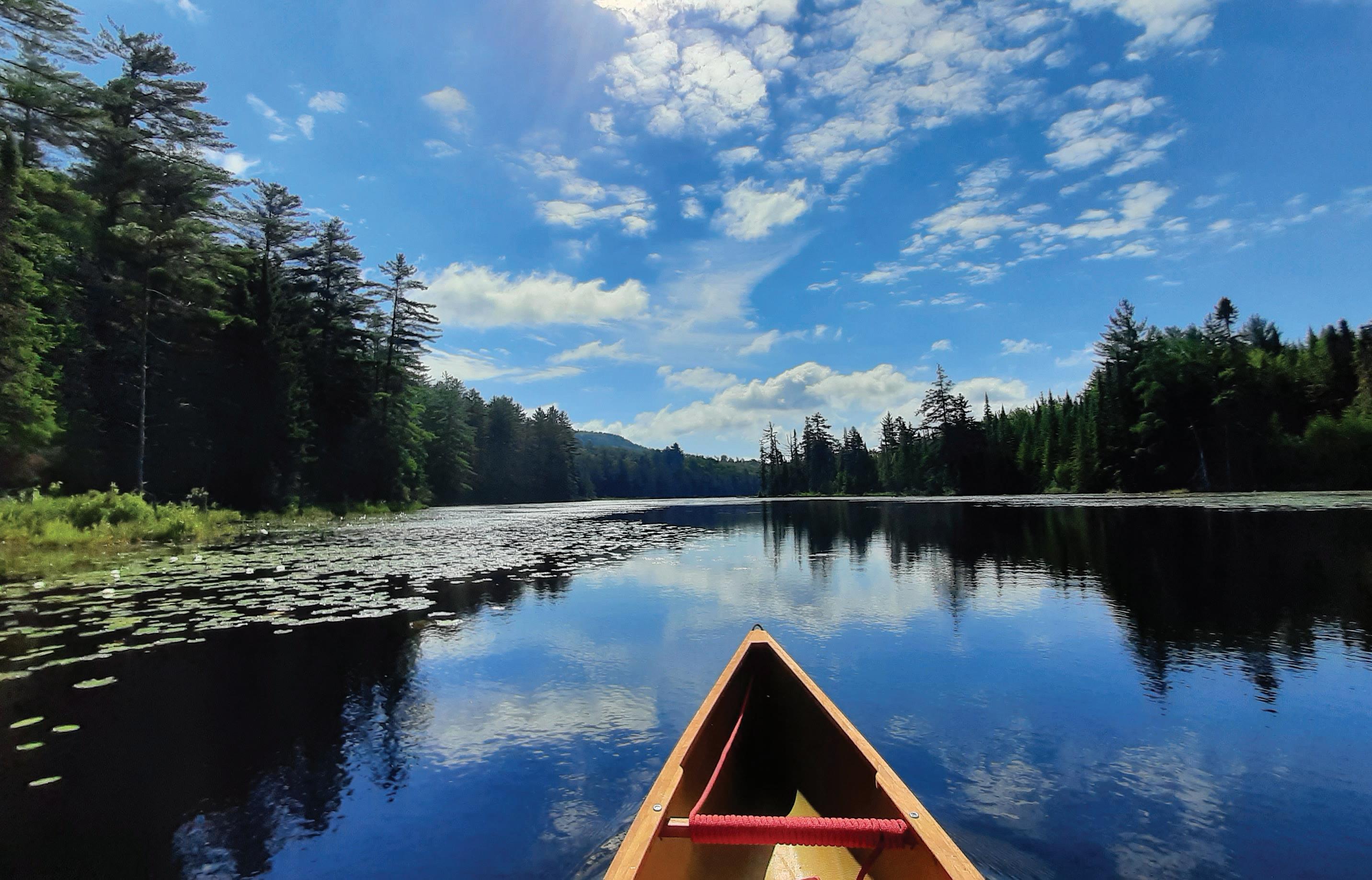
While every waterbody in the Adirondacks has unique characteristics, such as good fishing, historic sites, or incredible vistas, one place in particular offers what I found to be one of the most unique I’ve ever paddled.
Madawaska Flow is named as such because it’s not quite a pond, not quite a river, and not quite a wetland. But it contains elements of all three ecosystems in a combination that is hard to find, especially since the entire waterbody possesses this mix of characteristics.
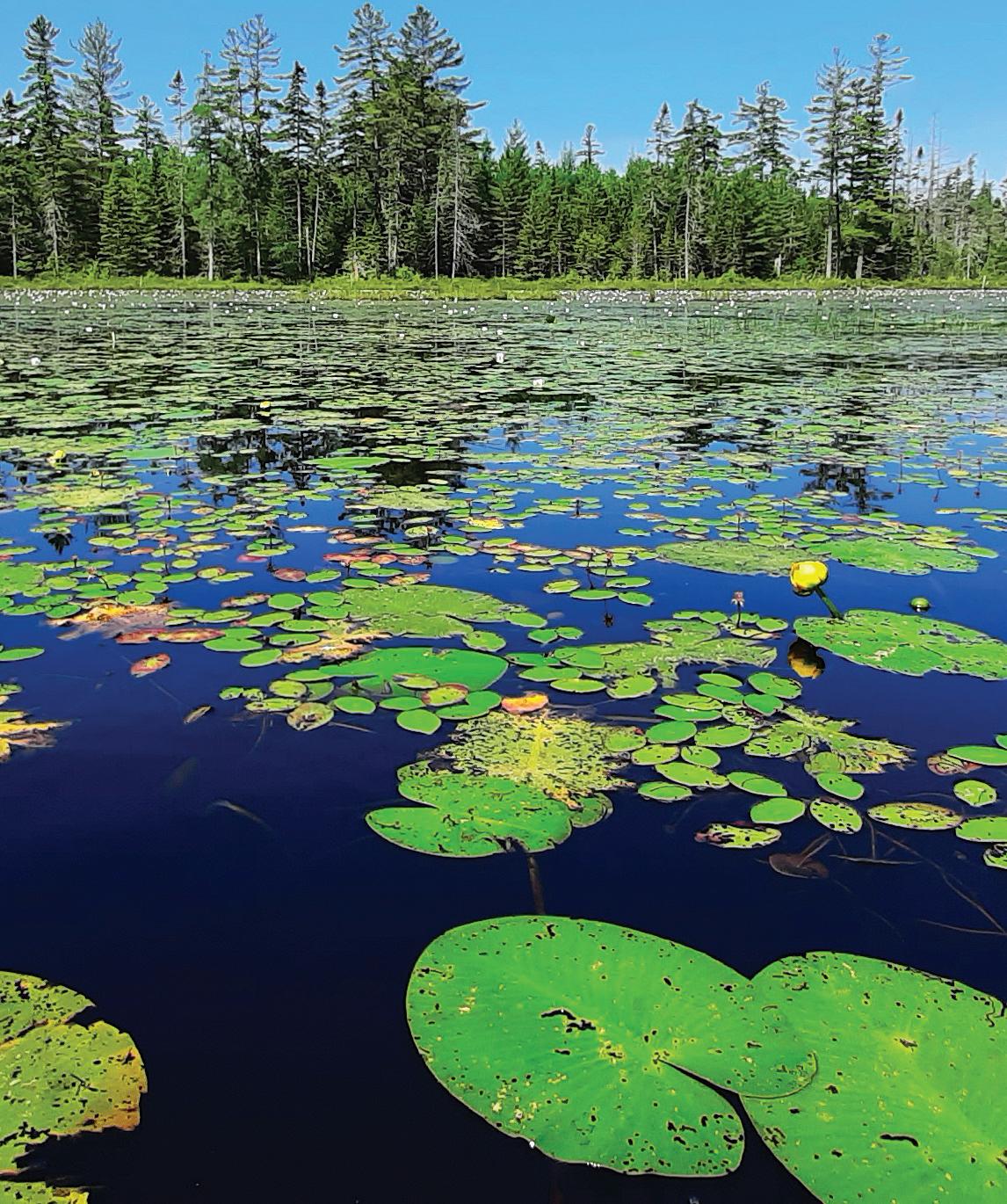
Madawaska Flow/Quebec Brook is a State Primitive Area surrounded by private conservation easement lands. The dirt
roads that allow access to Madawaska are logging roads on private land, so drive carefully and be respectful of the fact that the public is allowed to be on these private lands if you head out there to paddle.
When I went to launch my solo canoe on Madawaska last July, it was tough. After walking about a quarter-mile from my car, I came upon an open area on the left that provides access to the edge of the water. However, due to the large floating mats of boggy material, launching was difficult. If it’s low water or the boat you’re using is big and heavy, be prepared to use paddles to push yourself away from shore. With some perseverance, I made my way from the shore to the open water, which was about 100 yards away.
The launch is on the north side of the pond, so you have options when paddling here. If you go southeast, you will be in Quebec Brook and heading toward Paul Smiths, while going north will eventually put you in the
Continued on page 9
St. Regis River. I opted to head south, toward my alma mater. Of the water in the pond, only about half is actually open to paddling. Large, floating mats of bog-like material cover the other half. This may limit the paddling, but it is incredibly interesting, with unique habitat for birds and plants, there is no shortage of cool things to look at.
Heading south from the main body of water, the Quebec Brook stays wide, but similar to the pond, there is relatively little “open” water. There is, however, a channel that is easily followed as it winds through various patches of lily pads.
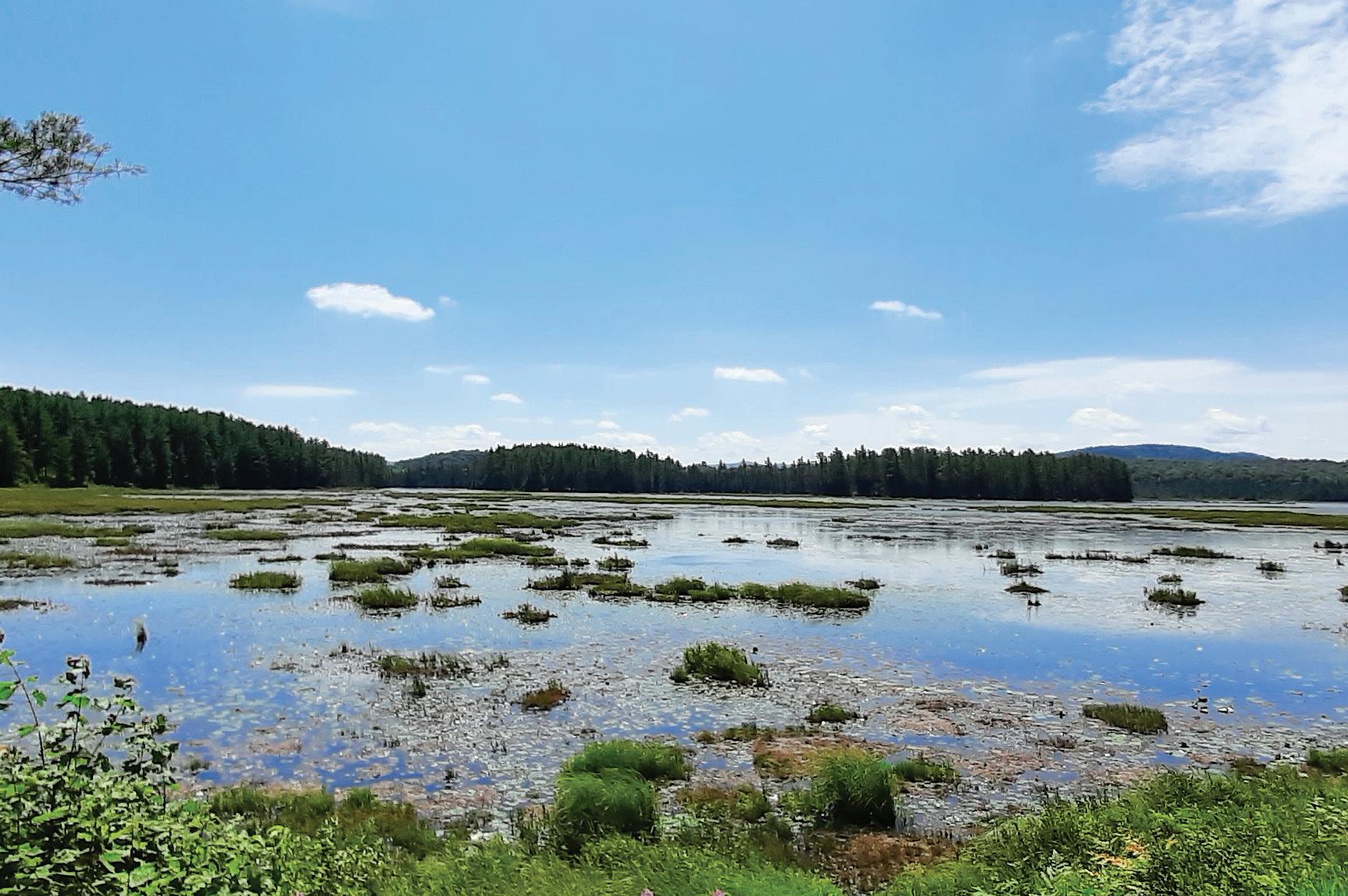
I used a light pace to kind of float through the lily pads. But shortly after I started down Quebec Brook, a loon popped up in front of my canoe, probably only 20 feet away. Due to the limits of the channel, the loon dove and swam away from me but popped up just a little farther away. We repeated this as I barely paddled, giving the loon some space. I could see the loon swimming in the very narrow channel and realized it probably wanted to go behind me but didn’t want to swim so close. So, I took what looked like a shortcut through
the lilies and glanced back to see the loon making its way back out toward the pond.
The paddling was easy, and there was no one else around. I relaxed and paddled a ways down the stream until deciding to turn around to go check out more of the pond. I toured the southern shore and went west where there
is more open water. Unfortunately, I didn’t have time to go to the northwest corner and into the outlet, so I guess I’ll just have to pick another day this summer to head up there and explore some more.
Directions: From Paul Smith’s College, go north for 8.8 miles and turn left onto Route 458. Go
1.4 miles, and turn left onto a dirt road. Go 0.3 miles and bear left, then go 0.8 miles and bear left again. Turn right after another 2.3 miles, then continue straight 1.5 miles later. Continue on the dirt road past private camps, and park in the small grass lot at the end of the road, under the large brown state land sign.
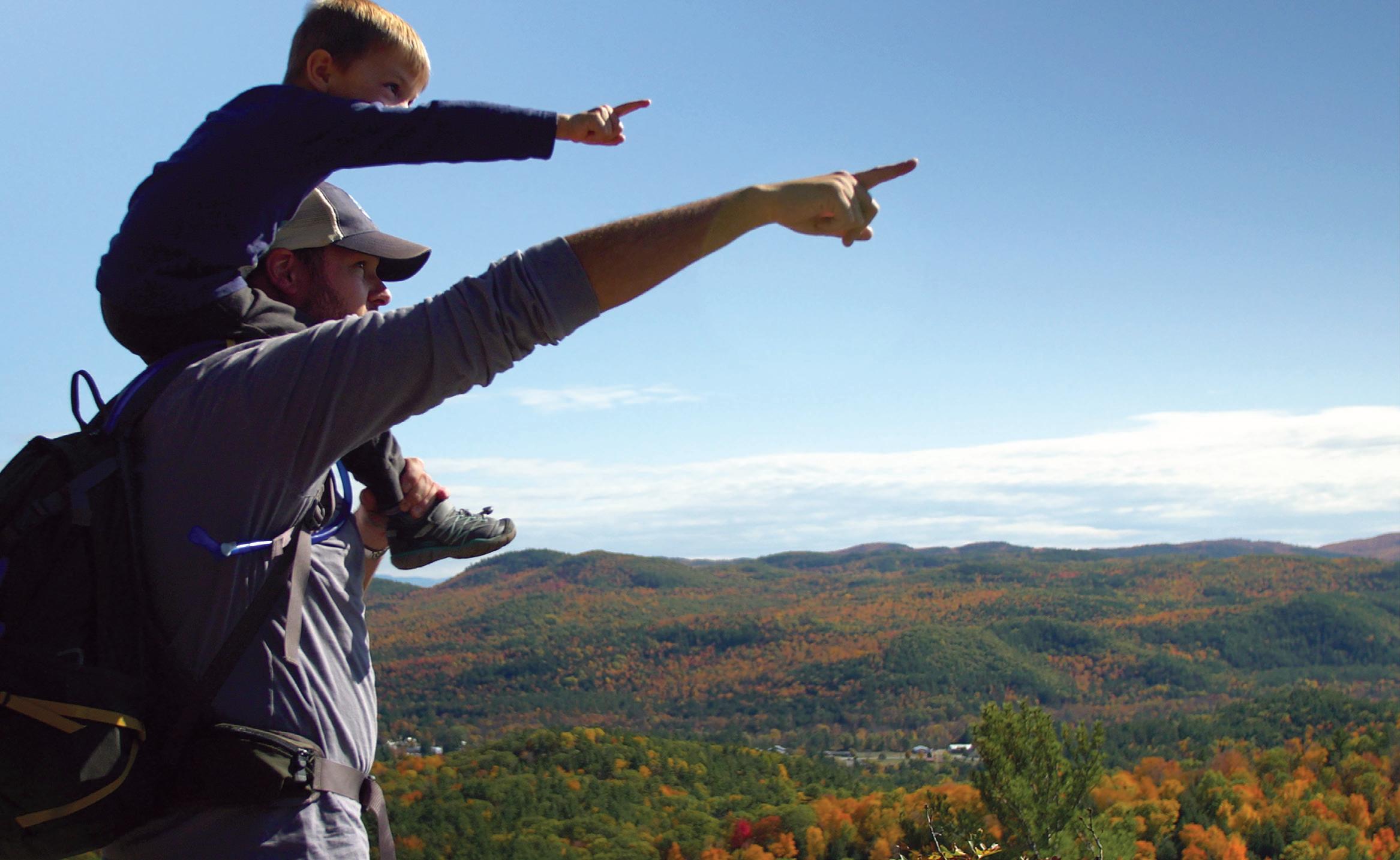

SARANAC LAKE — Melinda Fredenburg said farewell to some of her Bio 104 students at North Country Community College’s commencement ceremony on May 20. On May 19, she said farewell to a different crowd: More than 100 Atlantic salmon that students raised with her this semester on campus.
Fredenburg released the tiny adolescent fish into the Saranac River at the Saranac Lake Fish and Game Club on May 19 with aid from students in Christian Wissler’s Natural Resource Science class at the Franklin-Essex-Hamilton BOCES center across the street.
It was a bittersweet moment.
She had a hardy batch of the fish. Out of 120 eggs total, NCCC administrator Sarah Maroun counted 106 fish released — give or take a few.
“That’s good,” Bill Schoch said with a grin. He is a retired DEC fisheries manager and member of the nonprofit Trout Unlimited.
But he said the odds are against these fish. Many of them are destined to die before they are able to grow to maturity and reproduce. But Schoch said his hope is that the lessons Fredenburg’s students learned through this process stick with them much longer than any fish’s lifespan, and that they’ll go out into the world with a passion for protecting fish and the waters the fish call home.
Coming out of the coronavirus pandemic, Fredenburg wanted
her environmental science students to have something handson to do. She said they’re tired of being in front of a screen or reading a slide show every day.
The excitement over these salmon stretched outside the lab where the tank of growing fish were kept. She said she would overhear students walking by who saw the salmon signs hung on the door get intrigued and that students from other degree programs were stopping in to see the fish.
She plans to do this every year now. It has “perfect timing” for students to see the growth of salmon from start to finish.
Eggs arrive right before the semester begins and they are released when the semester ends.
Fredenburg said they got the eggs from the state Department of Environmental Conservation on Jan. 24. They hatched around Valentine’s Day on Feb. 14. They are now in the “fry” stage.
This was her first time ever raising salmon so she relied on Schoch’s knowledge a lot. The Lake Champlain Basin Program and Trout Unlimited supported the project and provided her with the tank, chiller, filter and food.
Fredenburg downplayed the work she put into this. At first she said she just had to make sure the tank was clean and feed them.
Fellow NCCC employee Becky LaDue was quick to jump in and point out that Fredenburg did this every single day.
“She is the mama bear over them,” LaDue said.
Though while bears typically
are predators for salmon, LaDue said Fredenburg was nurturing.
Fredenburg said it was a “personal challenge” for her to see as many survive as she could.
Schoch said Trout Unlimited likes to help with these projects to get students thinking about fish and their place in the ecosystem, and also thinking about protecting the nature these fish call home. Birds and mammals rely on fish for their survival, too.
“Salmon are having real trouble,” Schoch said.
Human intervention in the natural flow of rivers through hydroelectric dams are a big obstacle, literally.
They hinder salmon’s travel upstream to spawn, and make their journeys downstream incredibly deadly. Schoch said any travel through a dam leaves many mangled in the turbines.

He said this happens more on the West Coast where there are more dams. The Columbia River used to have “huge salmon runs,” he said. But now their population has drastically declined. Washington State recently released
a report that several species of Pacific salmon are nearing extinction, and those that aren’t are still struggling with reduced numbers.
If salmon can’t complete their life cycle naturally, he said it’s impossible to keep up with stocking fish from hatcheries.
The salmon released on May 19 will spend two years in the river, feeding and growing to the smolt stage. They will hang out between the Lake Flower Dam, upstream from where they were released, and the Franklin Falls Dam. Then, they will migrate down to Lake Champlain.
This is a treacherous journey. There are seven dams between here and the big lake and Schoch said there will be death at each dam.
For the ones who make it, they will feed on smelt in the lake and grow to an average size of 5 pounds. After a few years, they will return to the Saranac River one fall to spawn.
As Fredenburg watched her months of hard work swim downriver on May 19, she wished her fledgling salmon safe travels.
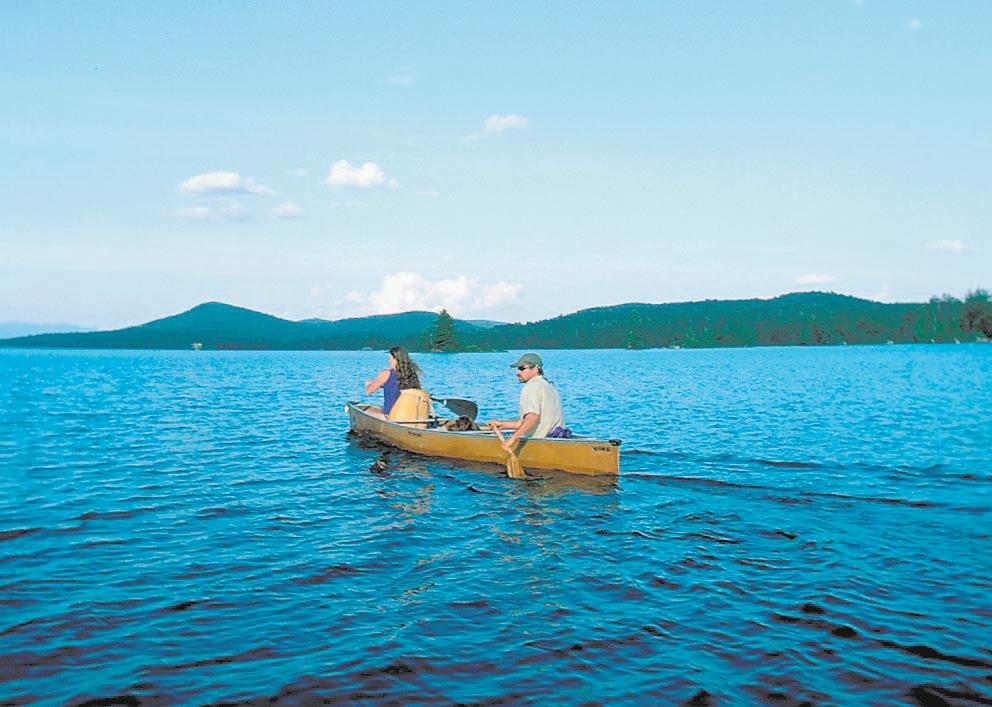
PAUL SMITHS — The state is renewing its contract with Paul Smith’s College’s Adirondack Watershed Institute for protection of Adirondack waters from aquatic invasive species with a $13 million, five-year partnership, the state Department of Environmental Conservation announced May 8.
Since 2015, the state has contracted with the AWI to administer its Watercraft Inspection Steward Program within the Adirondack Park. The AWI hires and trains around 100 seasonal stewards each year who inspect boats and educate boaters about “clean, drain, dry” practices at around 60 boat launches and roadside decontamination stations around the park. AWI leadership say public education is making a difference in stopping the spread of invasives and how the public prevents their spread.
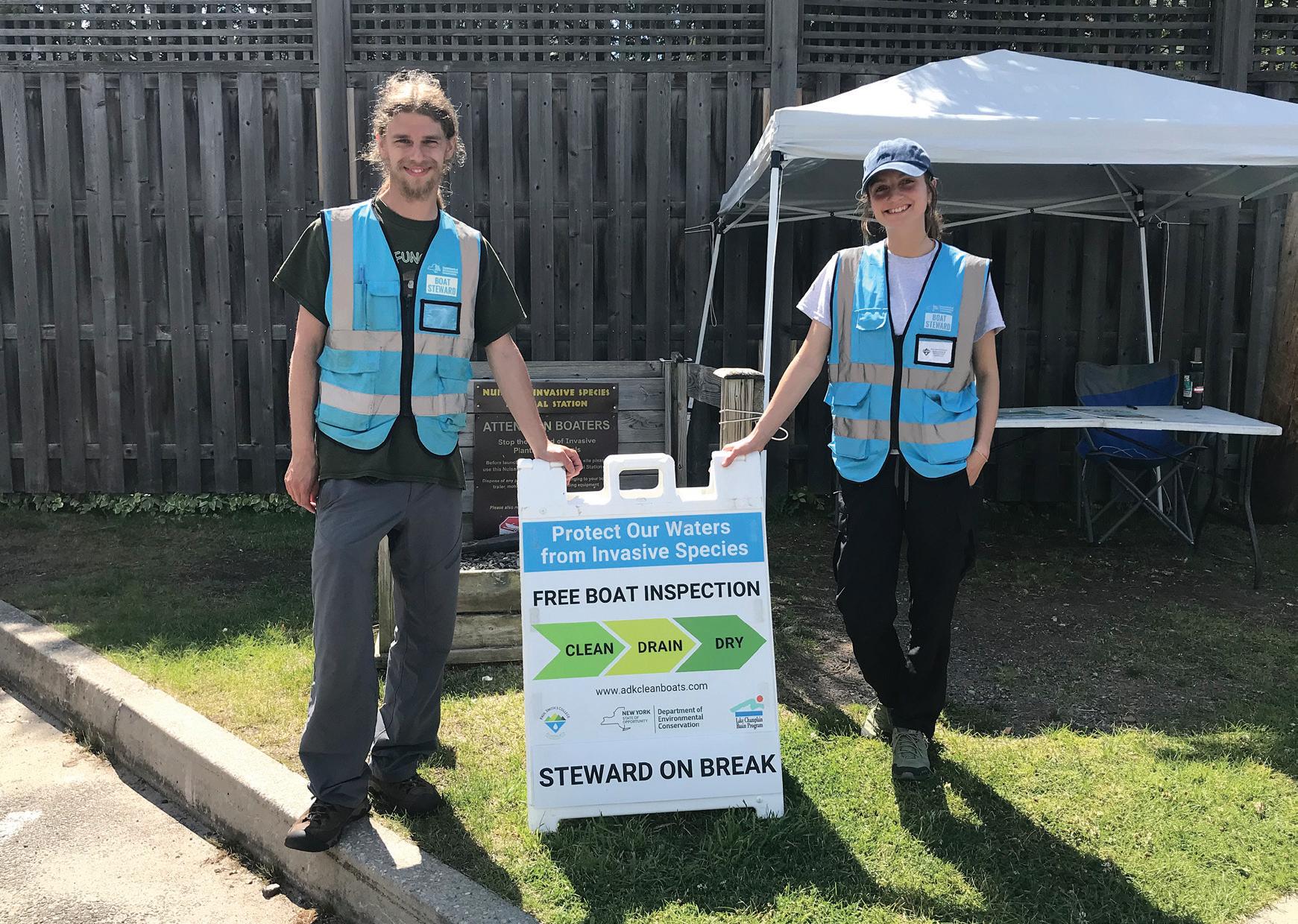

DEC Commissioner Basil Seggos announced the contract
renewal on May 8, which was “Adirondack Day” at the state capitol. AWI Executive Director Zoe Smith was in Albany for the annual event and was thrilled to learn about the extension.
She said the state’s initial contract with the AWI expired in
January, so this new contract continues it through this summer and until December 2027. The AWI has been working with the DEC on this contract renewal for months now, she said, and though they felt confident it would be renewed, they were waiting for the final
word. Smith felt Adirondack Day was a good time to hear the good news.
This $13.24 million contract is funded through the state’s Environmental Protection Fund. Seggos called the WISP one of the state’s “front lines of defense against invasive pests.”
According to the state, in the past five years, this inspection program has expanded to nearly 60 locations with approximately 29 decontamination stations. The state says 68,000 inspections were conducted at these stations last year and that stewards have inspected more than half a million boats since the program started.
AWI Stewardship and Education Program Director Bill Brosseau said this partnership “has led to measurable changes.”
Smith said stewards have intercepted thousands of invasive species — zebra mussels, waterfleas, Eurasian watermilfoil, curly leaf pond weed and hydrilla — at boat launches around the state. She said there have been “close calls,” with invasives being caught at boat launches before they can be introduced to the waters.
“The first five years were really building the program,” Smith said. “The next five years is really about strengthening it and expanding it.”
Continued on page 13
This includes more public education on invasives beyond just inspections. She said there will be new training for stewards engaging the public and the AWI is hiring two more full-time staff members and a new full-time education assistant.
In June 2022, the state enacted a law requiring motorboaters in the Adirondack Park, or within 10 miles of its boundary, to show proof that they had inspected and removed invasives before launching by getting a certification.
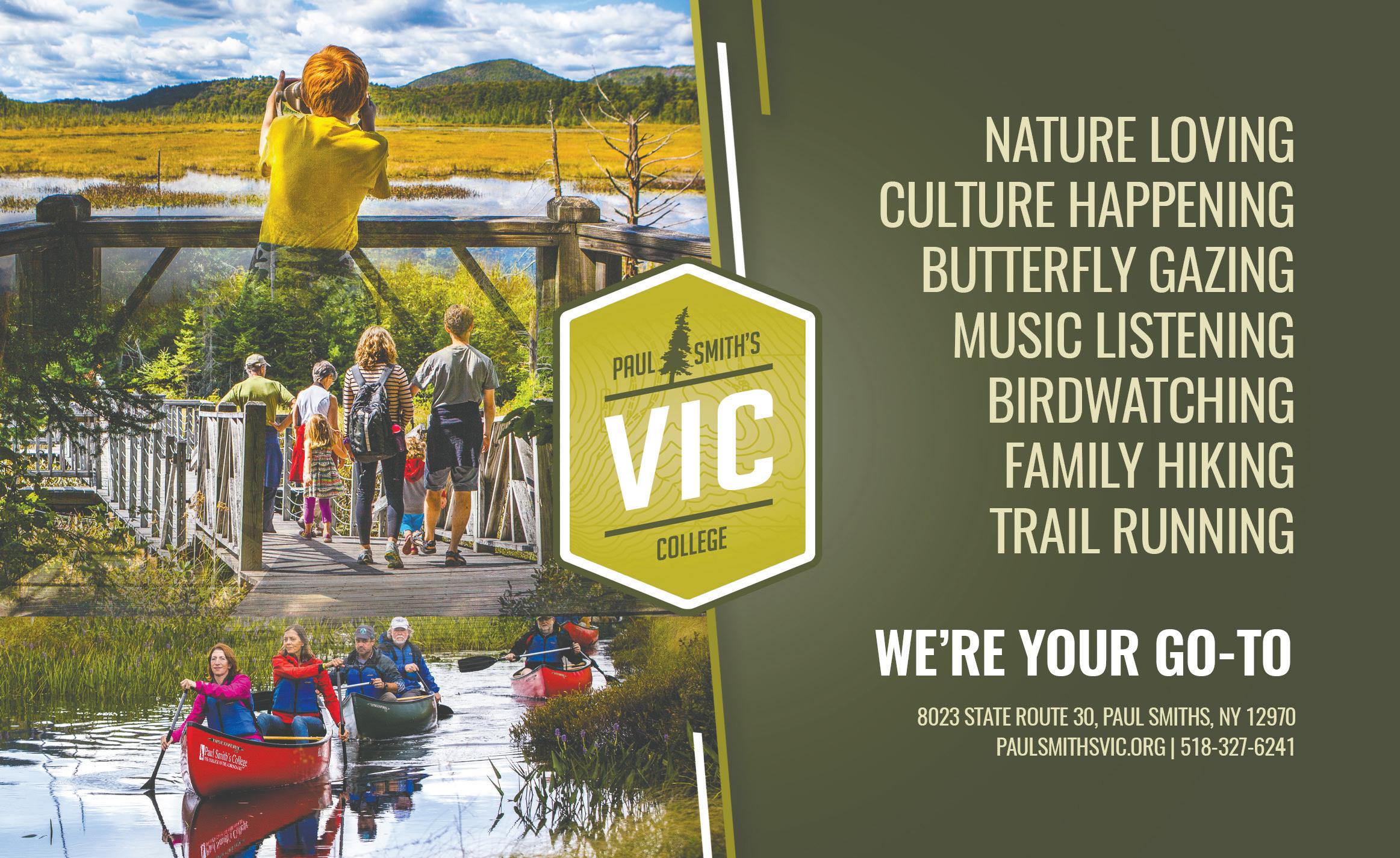
“If a DEC inspection station adjacent to a public waterbody in the Adirondack Park is open for operation, boaters must have either a self-issuing certification or decontamination certificate from a DEC inspection station before launching into the waterbody,” according to a DEC press release.

Smith said this is the AWI’s first full year of facilitating certification inspections under this new law. Stewards are teaching boaters about self-certification, trying to foster a sense of responsibility to do their part to prevent the spread of invasives when not assisted by boat stewards. She said she sees some self-certifications, but mostly by people who
put in on the same lake every week or whose boats have been out of the water for over two weeks.
There is not solid data on what percentage of boaters know about and have already completed “clean, drain, dry” when they get
to the launch compared to those that don’t, but Smith said more people know about the practice now than ever.
Smith said people now expect to have their boats inspected. There’s not as many questions anymore and people know what
to expect, she said.
She also said public knowledge means when there is an invasive outbreak, the AWI and the state hear about it sooner and it is easier to manage the spread before the invasion gets so big that they can’t do anything about it.
Smith said pretty much every community wants some sort of spread prevention measure at their local boat launch. This contract allows the AWI to be “strategic” in placing stewards at “high traffic or high-risk” lakes.
She wants to add more stations in the coming years, as well as new boat wash stations, which she called the “core” of the program. These high-pressure, hot water spray stations clear off smallbody organisms which she said can’t always be detected visually.
To learn more about self-certification, watercraft inspection and decontamination, visit the DEC’s YouTube page, or visit https:// on.ny.gov/3poEXwE.
An interactive map of AWI boat wash stations can be found at https://bit.ly/44DNDze.
The new state budget maintains EPF funding at a program-high $400 million, and includes a $1.55 million increase in addressing invasive species, a total of $18.55 million, according to a news release from the DEC.

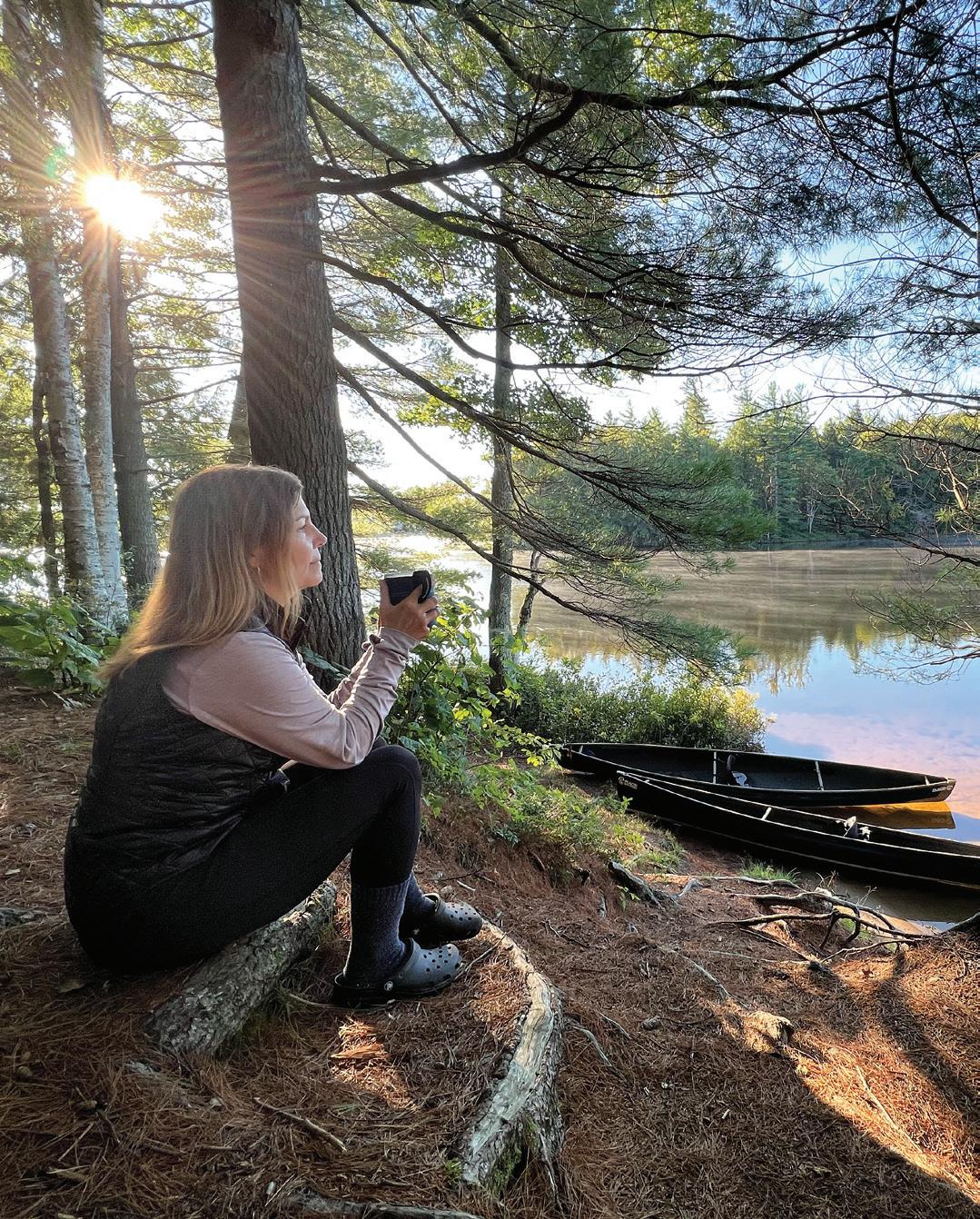
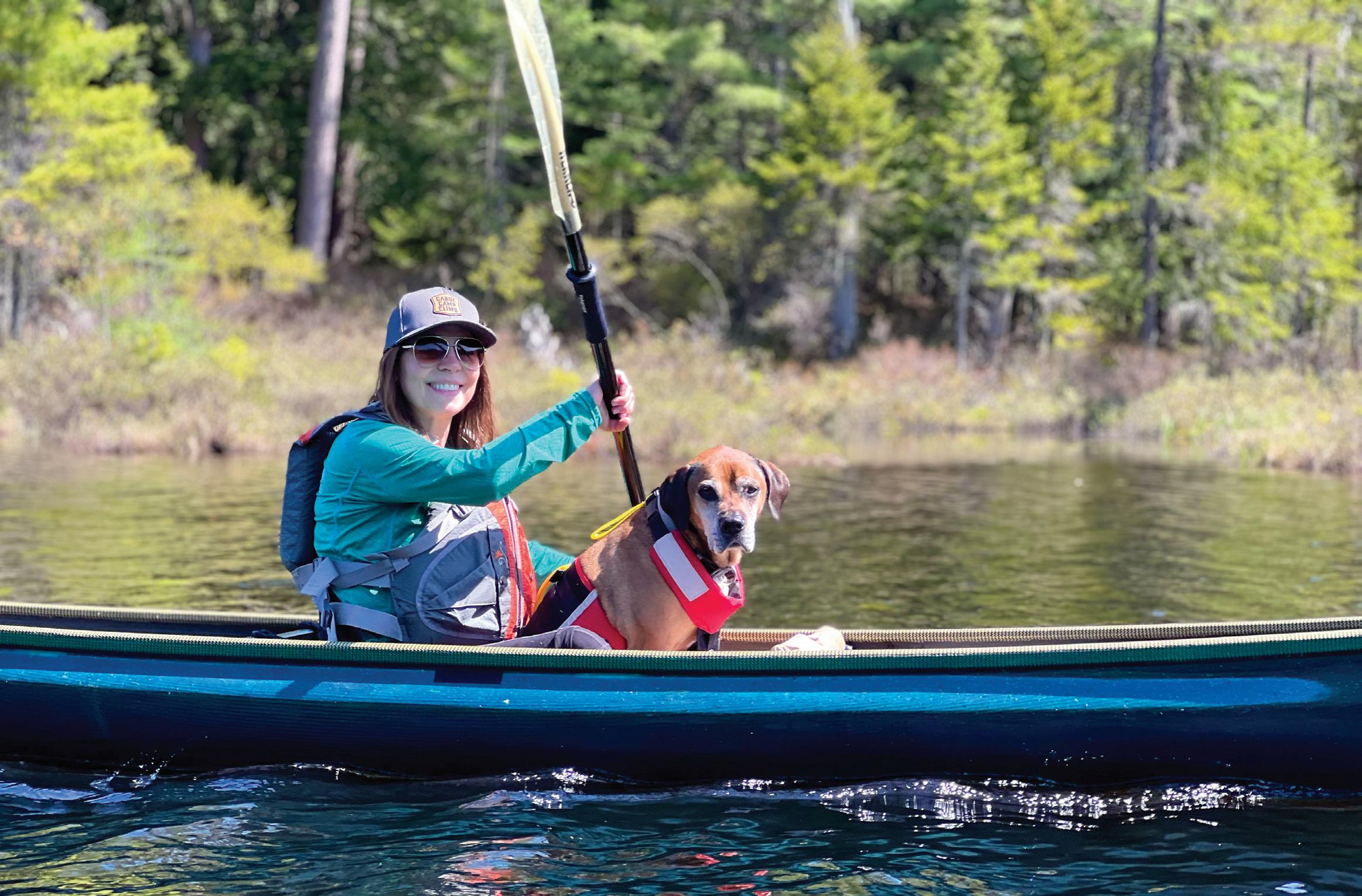
WESTPORT — Champlain Area Trails (CATS) is proud to announce that it has received a $100,000 grant from the New York State’s Environmental Protection Fund to create a new position in the organization, focused on community outreach and engagement initiatives.
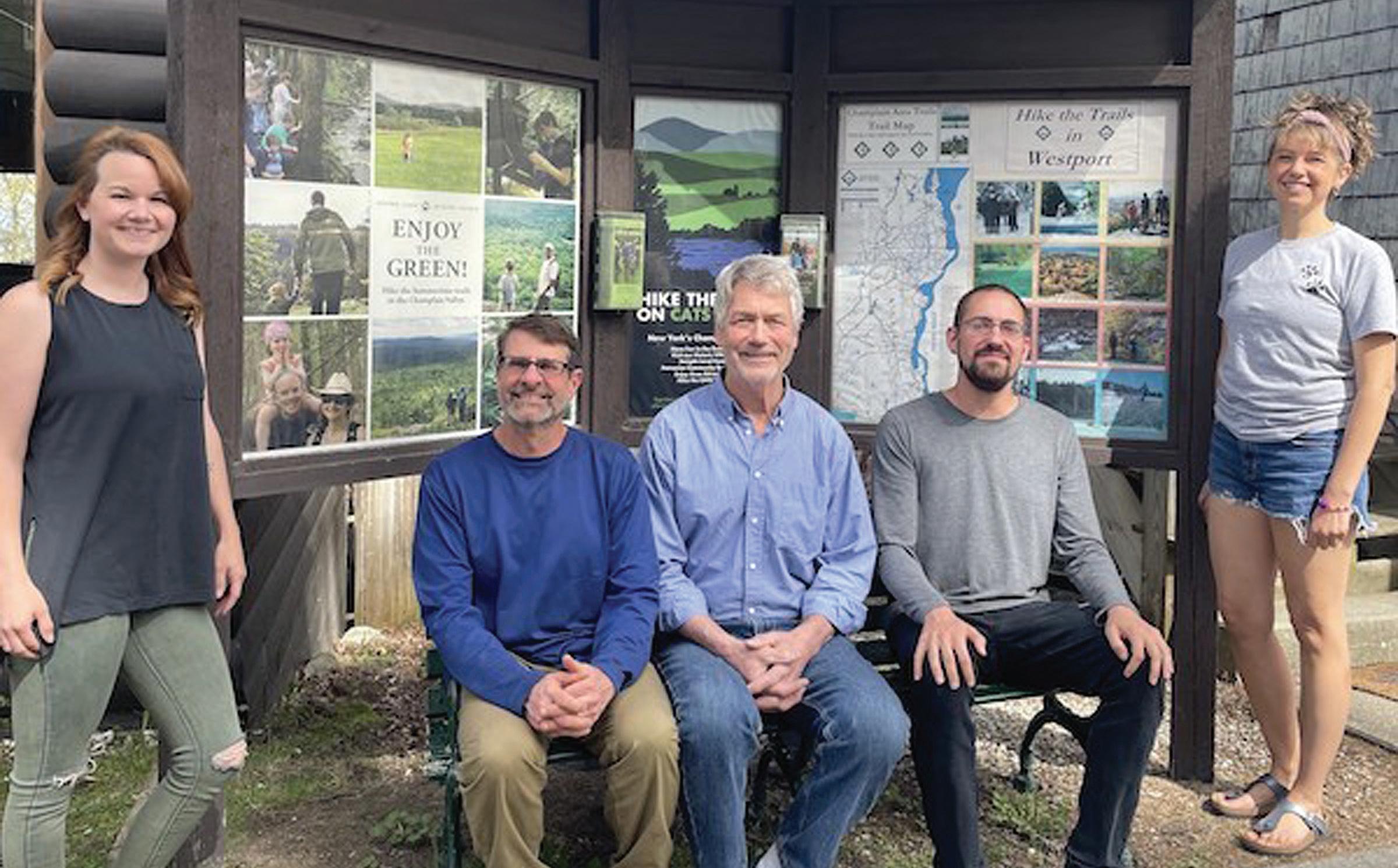

The new staff member will create and implement educational programs and public events throughout the Lake Champlain region to create new and strengthen existing partnerships with our local communities. The person will also develop community-oriented strategies to engage youth, promote outdoor recreation, and create a larger network of supporters for Champlain Area Trails.
“This grant will enable us to expand our reach into more communities in the Champlain Valley,” says Executive Director Chris Maron. “It will allow us to create new programs and activities to build relationships with the community and ensure everyone can benefit from the incredible outdoor experiences the Adirondack’s Champlain Valley has to offer.”
Since its founding in 2009, Champlain Area Trails has made 77 miles of trails, protected 983 acres, and hosted hundreds of hikes, outdoor education outings, and volunteer events, attracting thousands of visitors to the region.
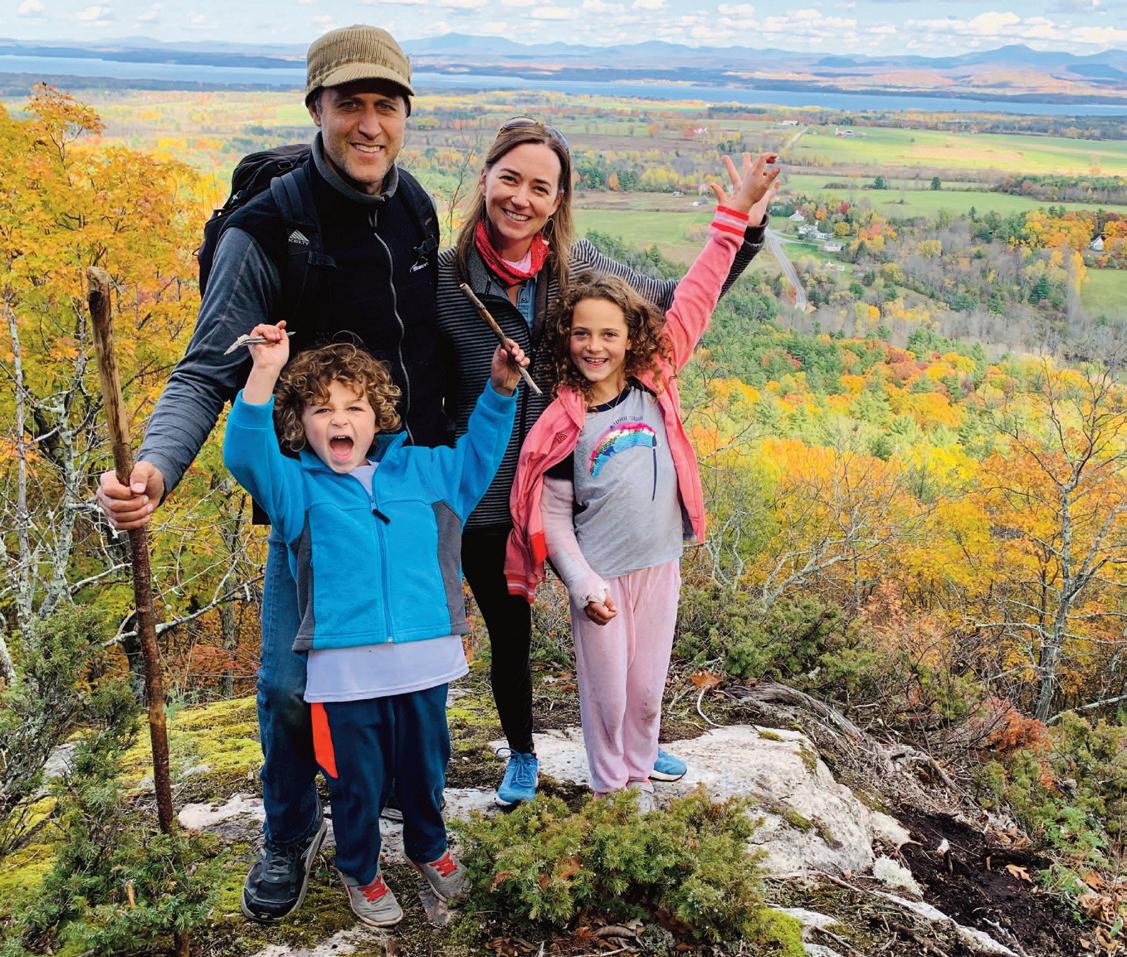
“We’re grateful to the New York State Department of Environmental Conservation and the Land Trust Alliance for continuing these important grants,” says Maron. “This funding will help us to ensure that everyone has access to our trails and programs so that they can experience the beauty and wonder of the great outdoors.”
Applications for the new Community Engagement and Outreach Manager position are now open, and instructions are available on their website: www.champlainareatrails.com.
Sure Strike Charters

Sport Fishing Lake Champlain 4584 Harbor Rd. Shelbourne, VT 05482
802-324-2289 Captain Brian www.fishvermont.com
Captain Brian and Captain Paul are USCG licensed and fully insured with over 50 years of combined experience fishing Lake Champlain Enjoy beautiful Lake Champlain and its great Landlocked Salmon and Lake Trout fishing on our 281⁄2 foot Baha Sport Fishermen Boat. We specialize in catching Lake Trout and Salmon but also target Walleye, Brown Trout and Steelhead.
Having spent my life in the outdoors, there is nothing more enjoyable than spending time in nature with others. Mountain Roots Guide Service provides guiding for fishing, ice fishing, hunting and other outdoor activities that you want to enjoy. Let's make memories that will last a lifetime!
Mountain Roots Guide Service LLC- Managing Member: Kelly Starkweather

603-455-2416
5812 NYs Rte 86 • Wilmington NY mountainrootsguideservice@gmail.com
High Peaks Adirondack Outfitters
Fishing (3 Tracker Bass Boats) Fly Fishing, Spin Fishing, Guide Service, Rentals, Shuttles, Sales, Lessons, Canoe Trips
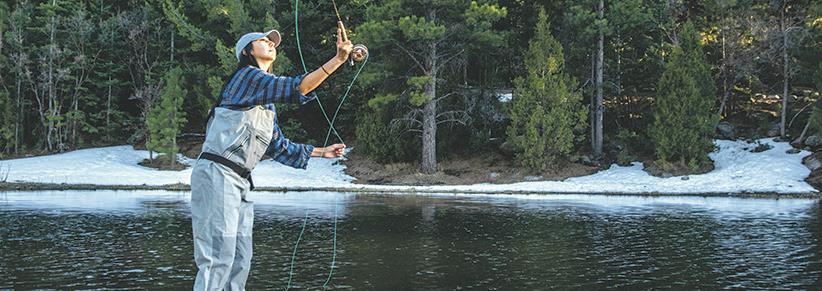
Sage, Rio, Patagonia, Hardy, Fenwick, Cortland, Wenonah Canoes and more Experience Adirondack Fly Fishing and Small Pond Brook Trout Fishing
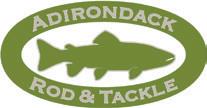
Brian Delaney
High Peaks Cyclery
High Peaks Adirondack Outfitters
Fly Fishing High Peaks Mountain Guides
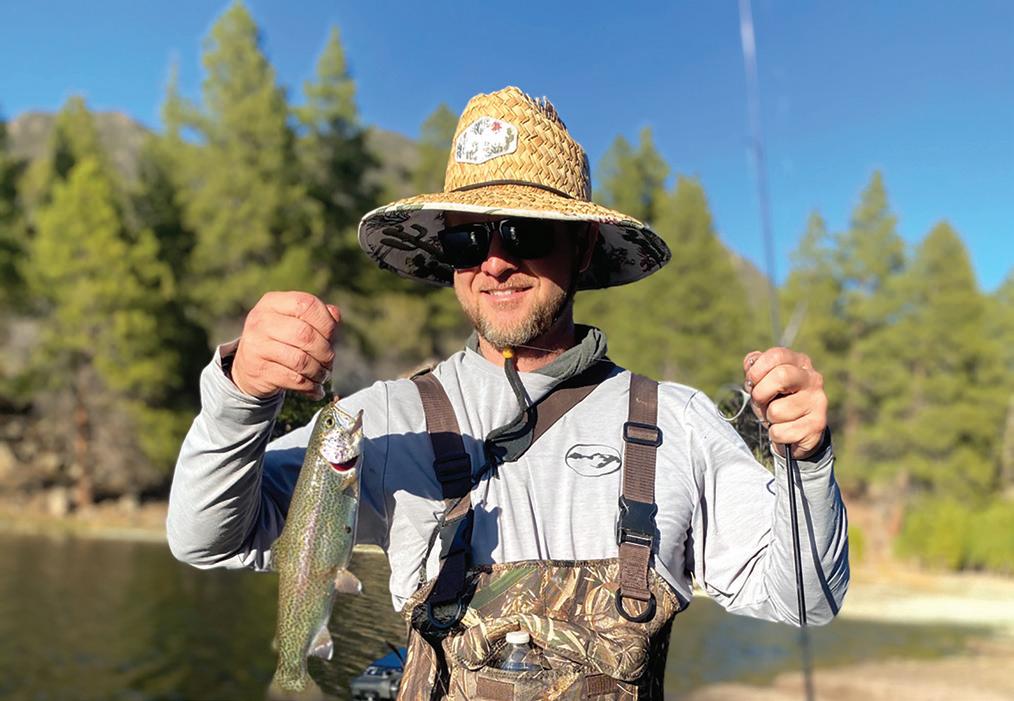
“True to Our Root” Since 1983
(518) 523-3764
www.highpeakscyclery.com
2733 Main St. Lake Placid, NY 12946
The Hungry Trout Fly Shop
5239 Route 86, Wilmington, NY 12997 518-946-2117
flyfishing@hungrytrout.com
www.hungrytrout.com

www.hungrytrout.com/fly-shop
Over 20 years of professional fly guiding and instruction. Premium fly fishing brands and seasoned, professional fly fishing guides. Lodging, dining, group and multi-day packages available. Voted 2017 “Best Outfitter” in Adirondack Life’s Readers’ Choice Awards.
High Peaks Adventure Cycling
Dirt Camps, Bikepacking, Bicycle Touring, Mountain Biking, Lake Placid to Tupper Lake Rail Trail Tours
Shuttles, Tours, Guides, Lessons, Support Multi Adventure Days with Bike, Hike, Paddle, Overnight Trips, Private, Group, Clubs, Family, Schools
Brian Delaney
High Peaks Cyclery
High Peaks Adirondack Outfitters
Fly Fishing
High Peaks Mountain Guides
“True to Our Root” Since 1983
(518) 523-3764
www.highpeakscyclery.com
2733 Main St. Lake Placid, NY 12946

The Guideboat was developed around the early 1900’s for outdoor guides to take patrons hunting, fishing and camping in the Adirondack mountains of Upstate New York. The boat was to be fast, stable, seaworthy and capable of carrying lots of weight. It also had to be lightweight in order to portage along the various rivers and lakes throughout the mountains.
This classic guideboat features the stream line hull design from world class marine architect Nick Schade. The hull shape and structure are accomplished by edge-gluing long strips of various cedar strips together in a tongue and groove fashion known as “bead and cove”. The hull is next fiber-glassed over inside and out, then drenched with 3 coats of epoxy, and many coats of varnish. This results in a beautiful, watertight, lightweight, durable, fast, stable and extremely strong watercraft, “A Classic that will last a lifetime, handed down through generations.”



Measuring 15 ½ feet long, 4 feet wide, weighing in about 110 lbs., Western red cedar and Alaskan yellow cedar form the hull. The “football” bottom board is ½ inch solid Cherry. Both stems and partial decking are Aspen. The deck is both Western red cedar and Aspen. Out-wales are Spruce/ In-wales are Ash. Oars are Canadian Sitka Spruce. Seats are Cherry. Asking price: $9,500.00

https://www.youtube.com/watch?v=xn_0FYeANGw

Sincerely,
David J. Huebner Email: shiva1952june@yahoo.com641-919-9535

